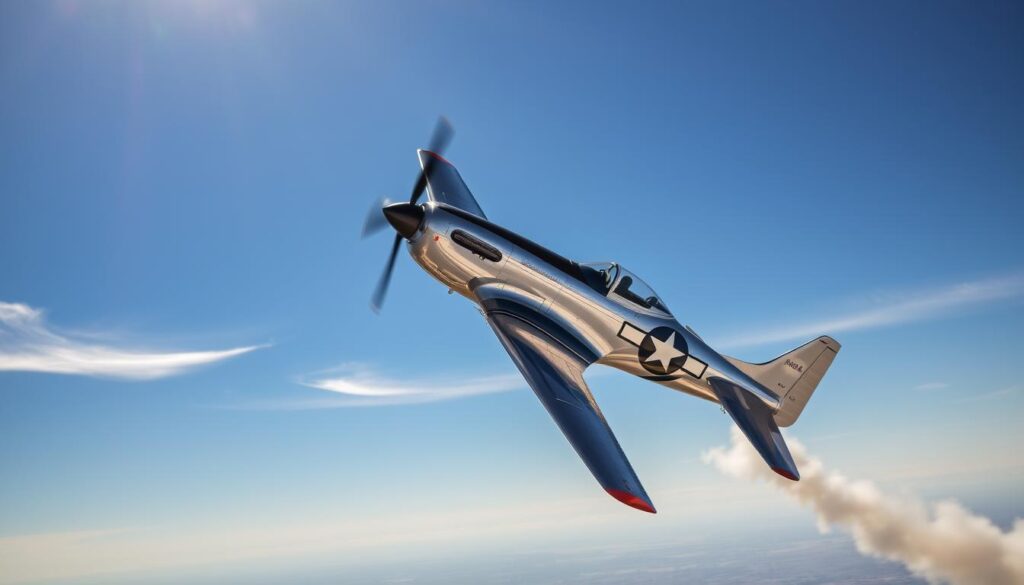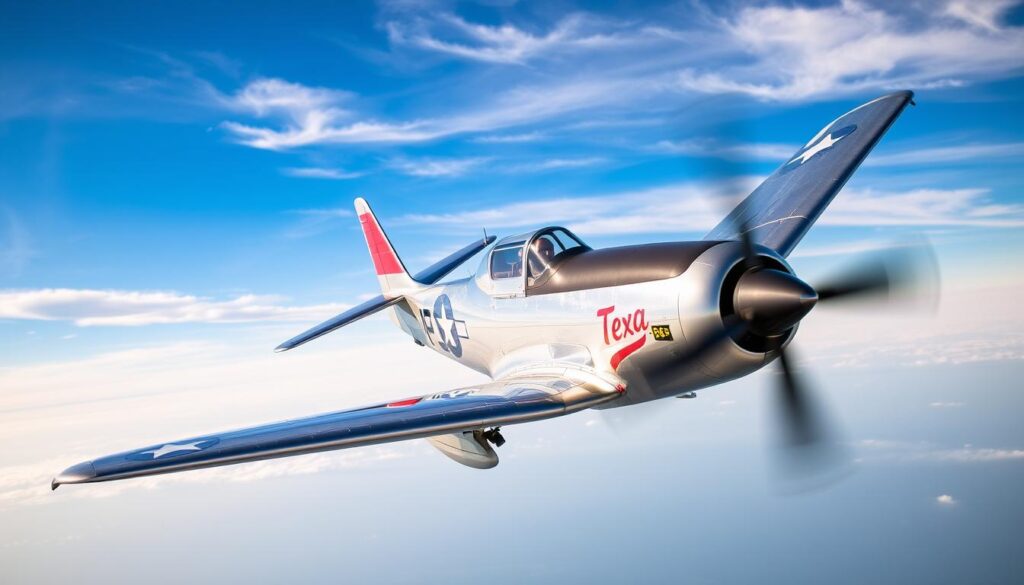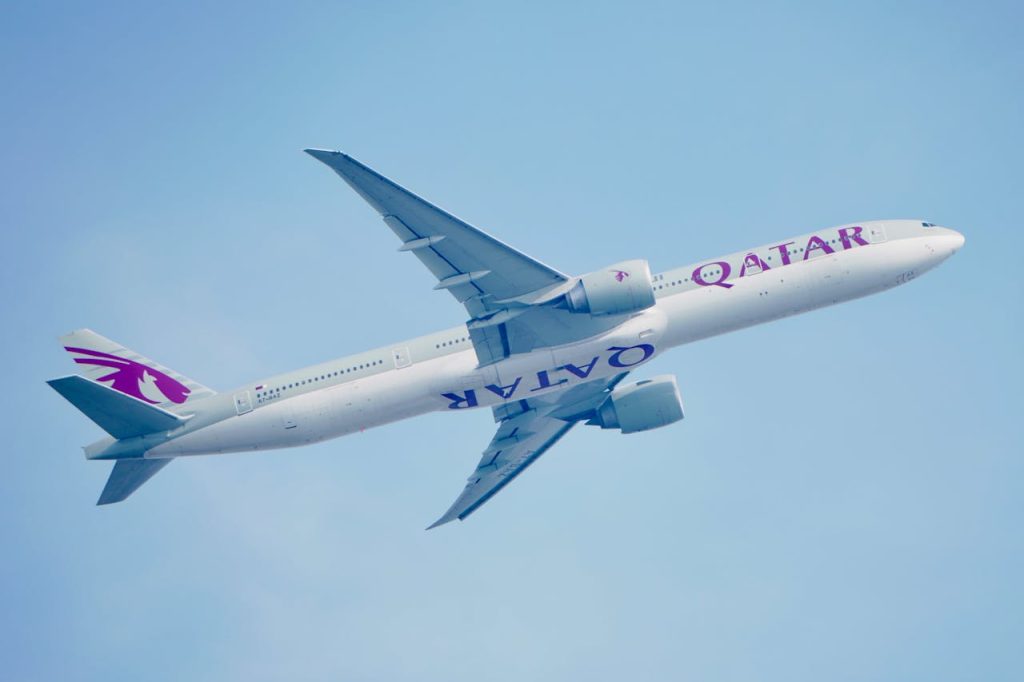The North American T-6 Texan is a legendary trainer aircraft. It has shaped the skills of pilots in many air forces. This includes the United States Army Air Forces and the Royal Air Force, during World War II and beyond.
We look at the importance of this single-engined advanced trainer aircraft. It was used by many countries. And it has a lasting legacy in military aviation.
Key Takeaways
- The T-6 Texan was key in training pilots during World War II.
- It was used by multiple air forces, including the USAAF and RAF.
- The aircraft is known for its durability and performance.
- The T-6 Texan has a significant historical impact on military aviation.
- Its legacy continues to be celebrated in aviation history.
Introduction to the North American T-6 Texan
The T-6 Texan was a key trainer for many air forces. It helped shape pilots’ skills around the world. Known for its durability, ease of handling, and training effectiveness, the T-6 Texan stands out.
Its history is closely tied to World War II and the post-war era. The T-6 Texan was more than a trainer. It played a key role in the growth of military aviation.
Overview of its Historical Significance
The T-6 Texan was a symbol of aviation’s capabilities back then. Its strong design and flexibility made it perfect for many military forces. Its importance is shown by its long use and adoption by many.
- Trained thousands of pilots during World War II.
- Continued to serve in the post-war era.
- Helped shape military aviation tactics and training.
The Role in Pilot Training
The T-6 Texan’s role in training pilots is huge. Its easy-to-fly nature and responsive handling made it perfect for teaching new pilots. It let trainees experience different flight conditions, readying them for military flying.
- Teaches basic flight skills well.
- Prepares pilots for more complex aircraft training.
- Was a mainstay in training for decades.
The T-6 Texan’s lasting impact on aviation is clear. It’s not just a trainer but a symbol of progress in aircraft design and training. Its influence still shapes today’s aviation training.
Design and Specifications of the T-6 Texan
The T-6 Texan is known for its strong design and great specs. It’s a top trainer aircraft. The North American T-6 Texan is famous for lasting long and flying well. It’s been a key part of pilot training for many years.
General Specifications
The T-6 Texan is 29 feet long and has a 42-foot wingspan. It’s a small but strong plane. It runs on a Pratt & Whitney R-1340 radial engine. This engine gives it the power it needs for training.
For more info on the T-6 Texan, check out the Wikipedia page on the North American T-6.
Unique Design Features
The T-6 Texan has special features that helped it become a great trainer. Its aerodynamic design makes it fly smoothly and predictably. This is perfect for new pilots.
It also has retractable landing gear and variable pitch propeller. These features let pilots learn about complex systems.
The T-6 Texan’s design and specs have won it many fans. Its mix of performance, durability, and training skills has made it a legend in aviation.
Variants of the North American T-6 Texan
The North American T-6 Texan has many variants, each with special features. These variants meet different training needs. They have been key in military pilot training globally.
The T-6G Variant
The T-6G is a major upgrade in the T-6 Texan family. It has modern avionics and engine upgrades. It’s widely used by air forces worldwide for its reliability and performance.
The T-6G has better airframe and cockpit designs. This makes it a great trainer for pilots moving to more complex planes.
The AT-6 Trainer
The AT-6 is a notable variant, known for its training role. It’s used in many military training programs. The AT-6 offers a full training experience, from basic to advanced combat skills. Its durability and easy maintenance make it a top choice for training units.
The AT-6 has been used in many countries. It has helped train pilots for combat missions. Its reputation as a trainer is well-known and celebrated.
Both the T-6G and AT-6 variants show the T-6 Texan’s flexibility and lasting impact in military aviation training. As we look into the T-6 Texan’s history, it’s clear its variants have been vital in training pilots globally.
Operational History
The North American T-6 Texan had a big role in World War II and later. It was mainly used to train pilots for combat. This made it a key part of military training.
Service in World War II
In World War II, the T-6 Texan was a go-to trainer for many military groups. Its toughness and simple upkeep made it perfect for training pilots in tough conditions.
Key Roles:
- Primary trainer for new pilots
- Advanced training for combat pilots
- Liaison and communication aircraft in some instances
Post-War Use
After World War II, the T-6 Texan kept flying with military forces worldwide. It saw action in many conflicts and stayed a mainstay in training programs.
| Country | Role | Years of Service |
|---|---|---|
| United States | Primary Trainer | 1940s-1950s |
| Canada | Advanced Trainer | 1940s-1960s |
| United Kingdom | Liaison Aircraft | 1940s-1950s |
The T-6 Texan’s ability to adapt and its dependability made it a crucial asset in military operations. It played a big part in its lasting impact.
Performance Characteristics
The T-6 Texan has a powerful Pratt & Whitney R-1340 radial engine. This engine gives the aircraft 600 horsepower. It can reach a top speed of 208 mph.
Engine and Speed Details
The Pratt & Whitney R-1340 radial engine is crucial for the T-6 Texan’s performance. It powers the aircraft for fast flight and ensures it’s reliable and durable. Here are some key engine specs:
- Power output: 600 horsepower
- Engine type: Radial engine
- Manufacturer: Pratt & Whitney
The T-6 Texan’s speed is perfect for training pilots. It can fly up to 208 mph. This speed, along with a stable cruise speed, makes it great for flying.
Maneuverability and Flight Experience
The T-6 Texan is known for its great maneuverability. Its design allows for agile flight dynamics. This makes it easy for pilots to do various maneuvers.
The T-6 Texan’s performance is key to its popularity. Its power, speed, and agility make it perfect for training and fun flying.
In summary, the T-6 Texan stands out because of its powerful engine and fast speed. Its flight experience has made it a legend in aviation.
The T-6 Texan in Modern Aviation
The North American T-6 Texan is still flying high in modern aviation. It’s loved by many around the world. Its design and role in aviation history are timeless.
Today, the T-6 Texan is a hit at airshows. Its flying skills and history attract big crowds. Some of these planes are for sale as “T-6 Texan for sale” to those who want a piece of history.
Current Role in Airshows
The T-6 Texan shines at airshows in the U.S. Its aerobatic tricks are a hit with the audience. Its history adds to its charm.

Airshow organizers love to talk about the T-6 Texan. They highlight its role in World War II and its use in flight training today. This makes the T-6 Texan a standout in modern aviation.
Popularity Among Aviation Enthusiasts
Aviation fans can’t get enough of the T-6 Texan. Many work hard to restore these planes to their original state. There’s a big community dedicated to preserving and celebrating the T-6 Texan.
The T-6 Texan’s charm goes beyond its history. Its flying abilities make it a favorite among those who love performance and heritage.
Maintenance and Preservation
The T-6 Texan, a vintage aircraft, needs special care to stay airworthy and valuable. Keeping it in top shape combines old-school skills with new tech.
Common Maintenance Practices
Keeping the T-6 Texan flying for years requires regular upkeep. This includes:
- Checking the engine, propeller, and frame often to spot problems early.
- Oil keeps moving parts running smoothly, so it’s applied regularly.
- Worn-out parts are swapped for new or exact replicas.
Engine maintenance is key. It affects the plane’s performance and safety. Inspections, fuel system checks, and repairs are essential.
Preservation Efforts Worldwide
Preserving the T-6 Texan is more than just fixing planes. It’s about keeping its history and culture alive. Groups around the world work hard to do this.
Some key efforts include:
- Restoring T-6 Texans to their original state, using original parts and documents.
- Museums and centers that display T-6 Texans, teaching visitors about its importance.
- Events and airshows that honor the T-6 Texan, letting owners and fans share their love.
These efforts keep the T-6 Texan alive in aviation history. They inspire new generations to value its legacy.
Flying the North American T-6 Texan
Flying the T-6 Texan is a unique experience. It’s both challenging and rewarding. This makes it a favorite among aviation fans. We’ll look at the training and tips for those who want to fly it.
Pilot Experience and Training
Learning to fly the T-6 Texan requires understanding its flight dynamics. Pilots go through tough training to master flying it safely. The training covers both theory and practical flying.
Key aspects of the training include:
- Understanding the aircraft’s specifications and performance capabilities
- Mastering takeoff and landing techniques
- Practicing maneuvers that test the pilot’s skill and the aircraft’s agility
Tips for Aspiring T-6 Pilots
Aspiring T-6 pilots need to focus on flying skills and experience. Knowing the T-6 Texan’s history and how it works is also key. Dedication and passion for flying are crucial.
Here are some tips for aspiring pilots:
- Find experienced instructors who have flown the T-6 Texan
- Keep training to improve flying skills
- Learn about the T-6 Texan’s history and mechanics
T-6 Texan in Popular Culture
The T-6 Texan has made a big impact, beyond its military use. It’s a cultural icon in aviation history. Its unique design and historical importance have won the hearts of many.
Film and Television Appearances
The T-6 Texan has been in many films and TV shows. It stands for the spirit of flying and military service. Its charm and versatility make it a top pick for movie scenes about flying and war.
For example, it’s in “Patton” and “Tora! Tora! Tora!.” It’s used to show different military planes from back then.
The T-6 Texan also stars in TV documentaries and series. Its design is both tough and beautiful. This makes it a hit with filmmakers and viewers.
Influence on Aviation Heritage
The T-6 Texan has a big impact on aviation history. It was key in training pilots during World War II and later. Today, it reminds us of military sacrifices and achievements.
It’s celebrated in museums and airshows worldwide. Aviation enthusiasts and historians love it for its historical value. It inspires new pilots, engineers, and fans of flying.
The T-6 Texan is more than just history. It’s a flying symbol of flight’s progress and sacrifices. Its lasting impact in culture and heritage shows its true value.
Community and Events
The T-6 Texan has created a lively community among its fans and owners. This group is filled with owner associations and a busy schedule of airshows and fly-ins. These events bring pilots, maintainers, and fans together, celebrating this iconic aircraft.
T-6 Texan Owner Associations
Owner associations for the T-6 Texan are key in keeping the aircraft in top shape and sharing its rich history. These groups let owners swap tips, resources, and stories. They host maintenance workshops, tech talks, and social gatherings, building friendships among members.
The North American T-6 Texan Association is a leading group in this effort. It helps keep the T-6 Texan’s legacy alive. Being part of these associations means getting access to lots of info and networking chances.
Airshows and Fly-Ins
Airshows and fly-ins are big deals in the T-6 Texan community. They let fans see the aircraft in action and meet the people who fly and fix it. The T-6 Texan’s aerial stunts are a hit at airshows, showing off its speed and the pilots’ talent.
Fly-ins, though, offer a closer look. They let people tour airfields, swap stories, and hang out with others who love the T-6 Texan. These gatherings are vital for keeping the community strong.
Thanks to these events and groups, the T-6 Texan community is growing. They celebrate the aircraft’s past and make sure it’s remembered for years to come.
Conclusion: Celebrating the Legacy of the T-6 Texan
The North American T-6 Texan has left a big mark on aviation. It was a key trainer for pilots all over the world. Today, it’s still celebrated at airshows and aviation events.
Preserving Aviation Heritage
Keeping the T-6 Texan’s history alive is vital. Efforts to restore these planes ensure its story stays with us. The T-6 Texan’s legacy shows the deep aviation heritage that inspires us all.
Looking to the Future
The T-6 Texan will always be a big part of aviation. Its ongoing presence at airshows and the love from aviation fans ensure its future. The T-6 Texan’s history will continue to be celebrated and preserved.


